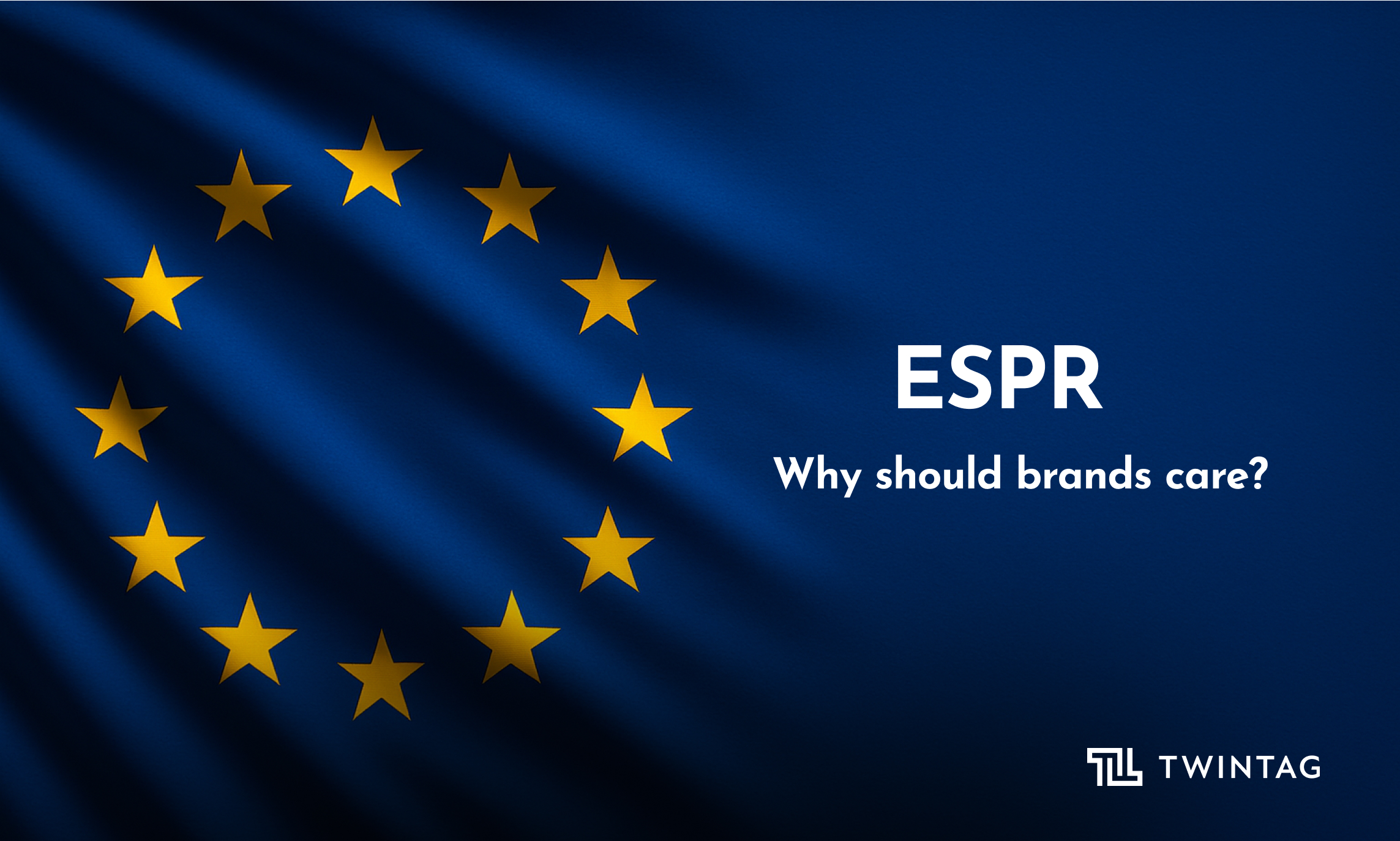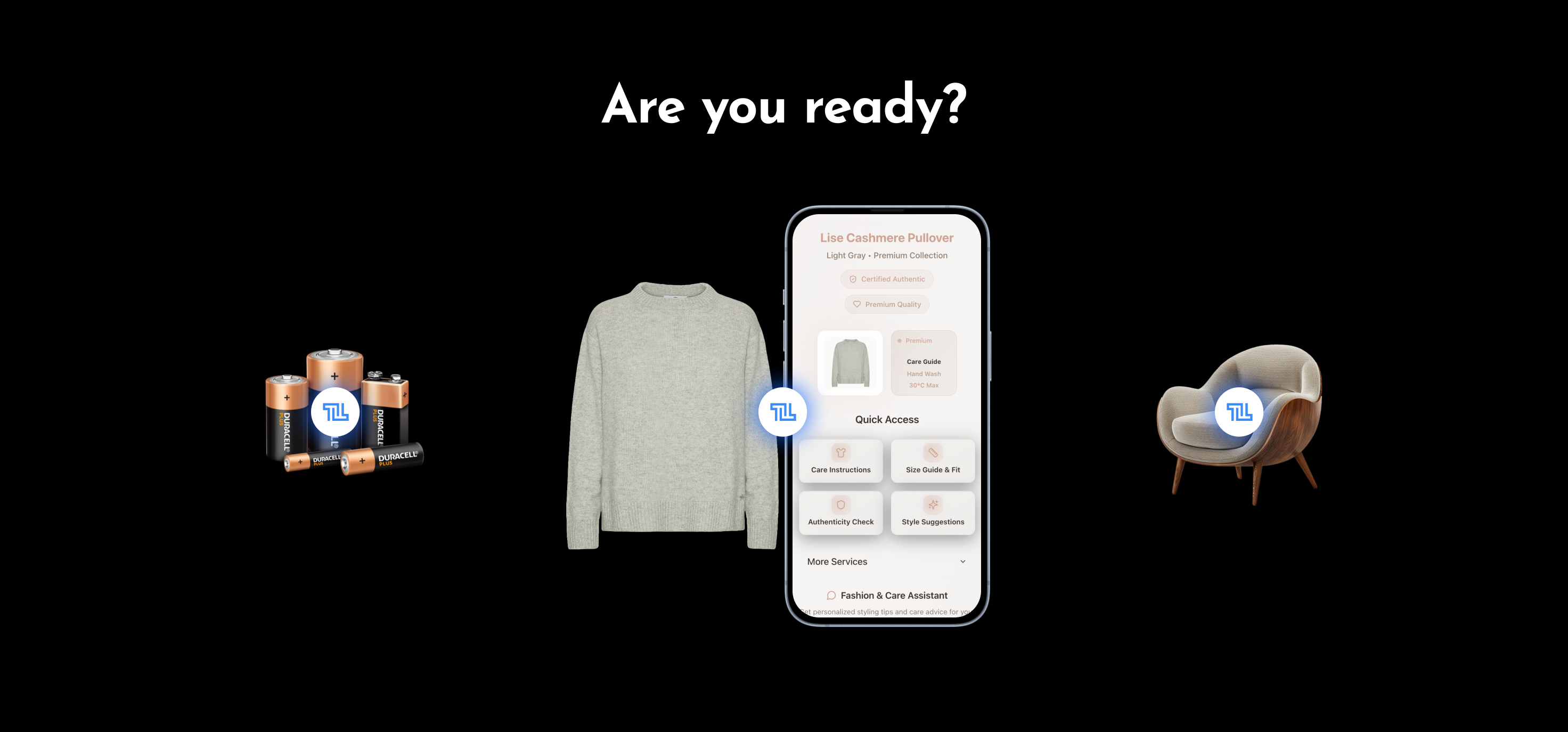Embracing Servitization for Future-Proof Business Models
Chances are you’ve never heard the term “servitization,” but you’re likely already experiencing its impact.
.png)
TLDR: Servitization—Turning Products into Services
Though you might not be familiar with the term 'servitization,' you're undoubtedly witnessing its effects in the marketplace. This strategy transforms traditional business models by integrating products with value-added services, enhancing customer relationships, and ensuring recurring revenue. In a world where consumer needs are rapidly evolving, servitization offers businesses a way to remain competitive and innovative. As part of this approach, technologies like serialized digital smart tags are becoming increasingly crucial, enabling companies to offer personalized and continuous service experiences seamlessly integrated with their physical products.
Known variously as “Product-as-a-Service,” “value creation,” or “adding services to products,” this concept, first defined in 1988 by Sandra Vandermerwe and Juan Rada, marks a significant shift in business strategy. It blends products with services, fostering long-term customer relationships over single transactions and setting new standards in today's competitive, tech-driven markets.
In an era of rapid technological progress and shifting consumer needs, servitization is essential for businesses aiming to stay relevant. Moving from traditional product-centric approaches to integrated solutions, companies are not merely selling products but are providing ongoing, comprehensive service experiences. This shift deepens customer engagement, generates stable revenue streams, and drives innovation, positioning businesses to excel and stand out in their industries.
Understanding Servitization
Servitization is more than adding services to products. It is a fundamental shift in business models toward integrating comprehensive solutions that deepen customer engagement and resilience. In today's world, where smart technology transforms products into service platforms, businesses evolve from transaction-based to continuous relationship models.
Focusing on customer-centric strategies, companies prioritize service excellence and support throughout the product lifecycle, integrating technology and processes to enhance customer experiences and meet evolving expectations. This shift not only transforms product offerings but also reshapes organizational culture and operations, fostering a holistic approach that drives long-term success in a service-oriented marketplace.
Why Servitization Matters
Servitization profoundly impacts business by creating robust, scalable revenue streams through subscriptions and service contracts, moving beyond the unpredictability of one-time sales. This approach helps to secure steady cash flow and integrate businesses more deeply into their customers' operations, enhancing service delivery and driving innovation.
The model provides comprehensive support and enhancements alongside products, transitioning from transactional interactions to collaborative, service-oriented relationships. This helps customers mitigate operational risks and costs, aligning their success with the business’s objectives.
In essence, servitization fosters mutual growth and loyalty, offering a win-win scenario where stable revenues for businesses coincide with enhanced service for customers.
Challenges on the Path to Servitization
Implementing a servitization model presents substantial challenges, including the need for a robust IT infrastructure to manage complex services and data analytics. Companies face significant organizational changes, requiring updates in sales strategies and training for employees to adapt to service-focused roles. Integrating smart technology into products is crucial, as it allows for tracking usage and monitoring service needs, demanding a shift towards a service-oriented company culture.
The move to servitization introduces risks and demands upfront investments in technology and training, with benefits often slow to materialize. The transition from product-centric to service-centric models can also meet internal resistance as business operations transform. Effective management of these changes is crucial to maintaining service quality and customer support while realigning internal processes and revenue structures.
Economic and Environmental Impacts of Servitization
Servitization brings economic gains and environmental benefits by prioritizing service quality and longevity over sheer sales volume, enhancing sustainability. Long-lasting products decrease waste and need fewer replacements, and practices like recycling and refurbishing reduce environmental impact. This approach aligns with global sustainability goals and attracts eco-conscious consumers.
Economically, servitization offers stable revenue through service contracts and subscriptions, invaluable in fluctuating markets. Continuous customer interaction garners vital insights, allowing businesses to refine services and react swiftly to market and customer dynamics. This adaptability boosts customer satisfaction and loyalty, providing a competitive edge and fostering economic growth.
Servitization in Action
In the automotive industry, manufacturers enhance customer convenience by bundling vehicle sales with comprehensive care packages, including maintenance, financing, and insurance. Similarly, industrial equipment manufacturers integrate IoT technology to embed sensors in machinery, enabling real-time monitoring and predictive maintenance, thus avoiding costly downtime. These practices exemplify servitization’s benefits across sectors, improving service delivery and customer satisfaction.
Furthermore, continuous data analysis from IoT devices in industrial settings leads to proactive service strategies and preventative maintenance, increasing equipment lifespan and operational efficiency. This approach minimizes operational disruptions and stabilizes maintenance costs for customers while providing businesses with a competitive advantage through superior service offerings. Such strategies shift business relationships from mere vendor transactions to deep, partner-based engagements, enhancing customer loyalty and retention.
The Role of Digital Tags and Smart Systems
Serialized digital tags and smart systems are essential in today's servitization landscape, enabling lifecycle tracking of products, personalized updates, and direct user communication. These technologies allow companies to provide customized maintenance tips (example here), automated reminders, and troubleshooting support, enhancing customer relationships and fostering trust through continuous engagement.
Beyond maintenance, digital tools collect valuable data on product usage that informs design improvements and new service development. This data helps reveal customer behavior patterns, driving the creation of new features and services that enhance revenue and product appeal. Moreover, this information supports ongoing innovation, giving companies a competitive advantage in delivering solutions tailored to evolving customer needs.
Global Trends and Industry Adoption
Servitization is expanding globally as various industries recognize its strategic benefits. Sectors from aerospace to consumer electronics are adopting this model to align with consumer needs and differentiate from competitors. Aerospace companies, for instance, implement power-by-the-hour agreements that allow airlines to pay for engine usage, reducing initial costs and linking expenses directly to usage, exemplifying the shift towards flexible usage-based pricing.
Beyond traditional industries, healthcare and IT are also embracing servitization. Healthcare manufacturers provide devices as a service, giving providers access to the latest technologies without large capital expenditures. In IT, the prevalence of software as a service (SaaS) models enables continuous updates, maintenance, and support, transforming traditional sales into ongoing service relationships. These adaptations across sectors illustrate servitization's broad adoption and its ability to meet specific industry needs.
Future Outlook and Technologies
The integration of AI and machine learning is set to significantly expand the capabilities of servitization. These technologies facilitate personalized services and predictive maintenance that preemptively address potential disruptions. Additionally, blockchain advancements promise to transform service contracting and monitoring, enhancing transparency and trust.
AI's role in servitization includes developing systems that analyze data to refine service offerings, such as optimizing maintenance schedules or suggesting service enhancements that improve the customer experience. Machine learning algorithms evolve to provide sharper insights, helping to minimize downtime and reduce costs. Blockchain also plays a crucial role by securing transparent service agreements, especially beneficial in complex industries, ensuring compliance and accountability through immutable transaction records.
Conclusion
In today's dynamic market, servitization is crucial for companies aiming to stay competitive. This shift to service-centric models enhances customer relationships, turning clients into long-term partners. Technologies like Twintag’s serialized smart tags are key, enabling features such as real-time tracking and personalized updates that support continuous revenue and growth. These integrations help companies deliver comprehensive solutions that meet evolving consumer demands. Although transitioning to full servitization may bring challenges, the advantages of this approach—focused on customer and technological innovation—equip businesses to excel in a changing landscape.


-min.png)



